Visiting Hawaii’s native species
on land and sea.
We are all guests here. Whether you visit for a day or a lifetime, it’s easy to see that nature is in charge on the island of Hawaii. Its spectacular environment envelops, overwhelms, and inspires mere humans with drama, beauty and powerful forces of nature almost everywhere we go.
But if we take a moment to step back, away from the busier places, to pause, listen and quietly observe, we can experience a quieter side of Hawaii that existed long before humans arrived. This is a place where native creatures live—birds from the forest canopy to the ocean shore, the sea turtles and seals, fishes, corals, diverse marine life from tiny organisms to giant humpback whales.
As you read, we invite you to step into the forest, and hear Hawaii’s birds filling daybreak with song. Click here to listen.
This is “Dawn Chorus at Kipuka Ki,” recorded by Dr. Jacob Job during the BioBlitz and Biodiversity & Cultural Festival at Hawaii Volcanoes National Park in 2015.
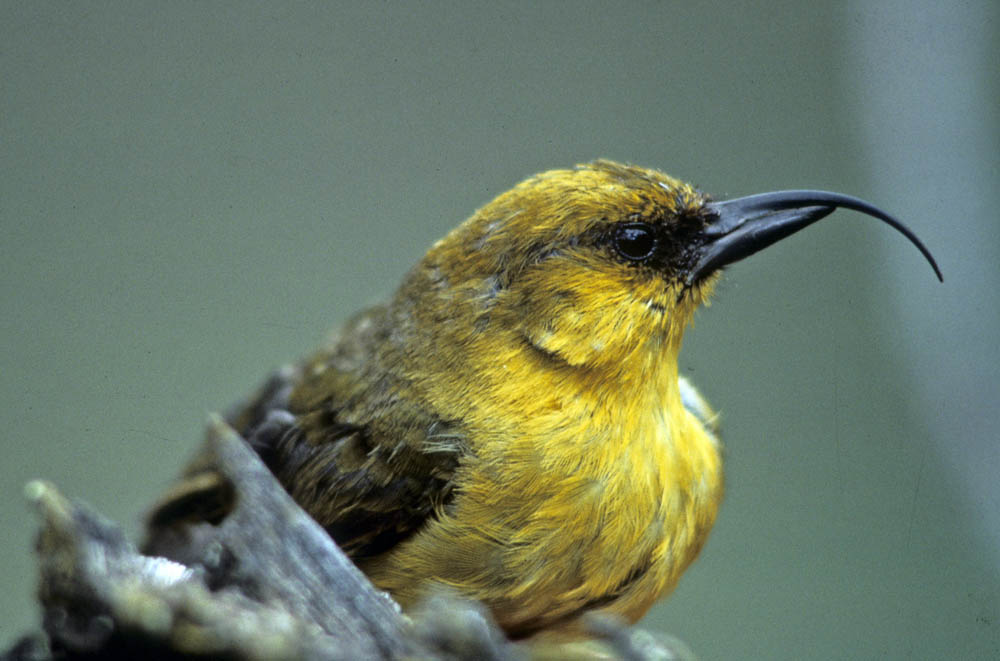
“One thing I like to point out is that we see native wildlife on all of our tours, because it’s all over the Island if you know where to look for it,” said Jason Cohn, director of sales and marketing with nature tour operator, Hawaii Forest & Trail (HFT). “Our guides also explain how animals, plants, insects, arrived on the island, and proliferated into the various species they’ve become today. We are like the Galapagos on steroids.”
Jason says one great example is the family of Hawaiian Honeycreepers. “A single ancestor or couple arrived and speciated out into all the Honeycreepers we have today. They evolved to fill various niches in the forest. Akiapolaau takes the place of the woodpecker, the iiwi lives on nectar from flowers.”
HFT runs two different bird-treks: one to the Hakalau Forest National Wildlife Refuge and one to the cloudmist forest on the slopes of Maunaloa and dryforest of Maunakea, the only remaining habitat of critically endangered palila bird. “The palila is a great symbol,” said Jason. “It is extremely important to the perpetuation of the habitat. It feeds off seed from the mamane tree, and if the mamane dwindles, the palila dwindles.”
“The big thing for us is, we want to create deep and lasting connections between our guests and the places they visit,” said Jason. “So they will want to conserve Hawaii’s natural resources and native species. It starts with education and understanding. We take people to Hawaii Volcanoes National Park and it’s not just about taking a picture on the crater in front of the lava. It’s about the entire ecosystem, how fragile it is and how we might be able to help preserve it so one day our kids and their kids can come back one day and enjoy it.”
2nd Annual Hawaii Island Festival of Birds
http://birdfesthawaii.org
https://hawaiibirdingtrails.com/
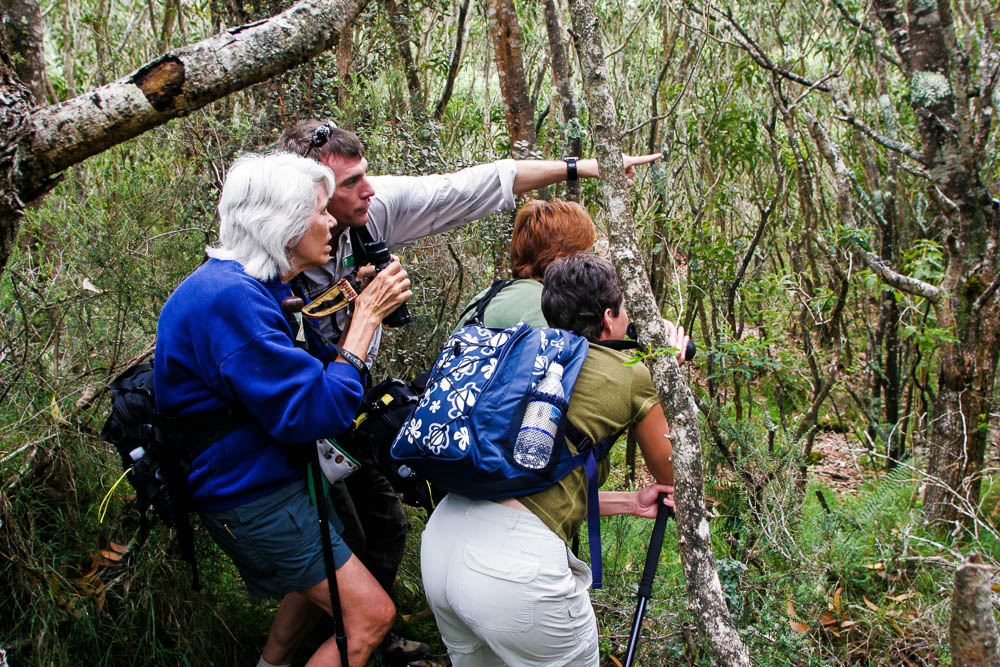

Hawaii Forest & Trail is open daily, with multiple pickup locations
808-331-8505
www.hawaii-forest.com

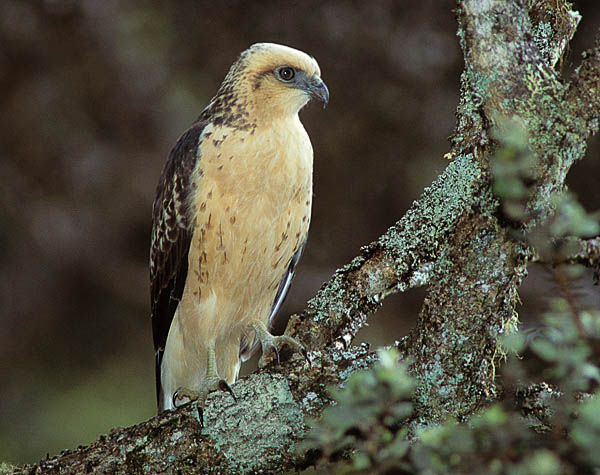
As you continue listening to the Dawn Chorus, you may start to hear different voices of the avian choir including native species such as apapane, elepaio, omao, and amakihi. These are just a few of the 58 different bird species who make their home in Hawaii Volcanoes National Park, including shoreline and water birds, owls, hawks, falcons, songbirds, pheasants, ducks and geese.
A complete checklist is available for download here: https://science.nature.nps.gov/parks/havo/Checklist_HAVO_birds.pdf. The list shows bird species that are endemic (found nowhere else on earth), indigenous (species that arrived unassisted by people, but that occur elsewhere), migratory (arrive and depart Hawaii seasonally) and introduced (released by humans and established breeding populations).
Many of the endemic bird species are brilliantly colored, such as the scarlet iiwi and apapane, and were prized in Hawaiian culture for their plumage. Birds like these were carefully stalked by skilled bird-catchers who would capture them, pluck and collect some feathers then release them to sustain the flock. From their feathers, artisans created lei hulu (feather lei), kahili (ornamental staff), magnificent ahuula (cape) and mahiole (helmet) for alii (royalty). Visitors to the Park may have the opportunity to try their hand at featherwork at cultural presentations.
Sadly, many of Hawaii’s native birds are gone forever. According to the American Bird Conservancy, “Thirty-three of Hawaii's remaining 44 endemic birds are listed under the Endangered Species Act; ten of those have not been seen for decades and are likely extinct.”

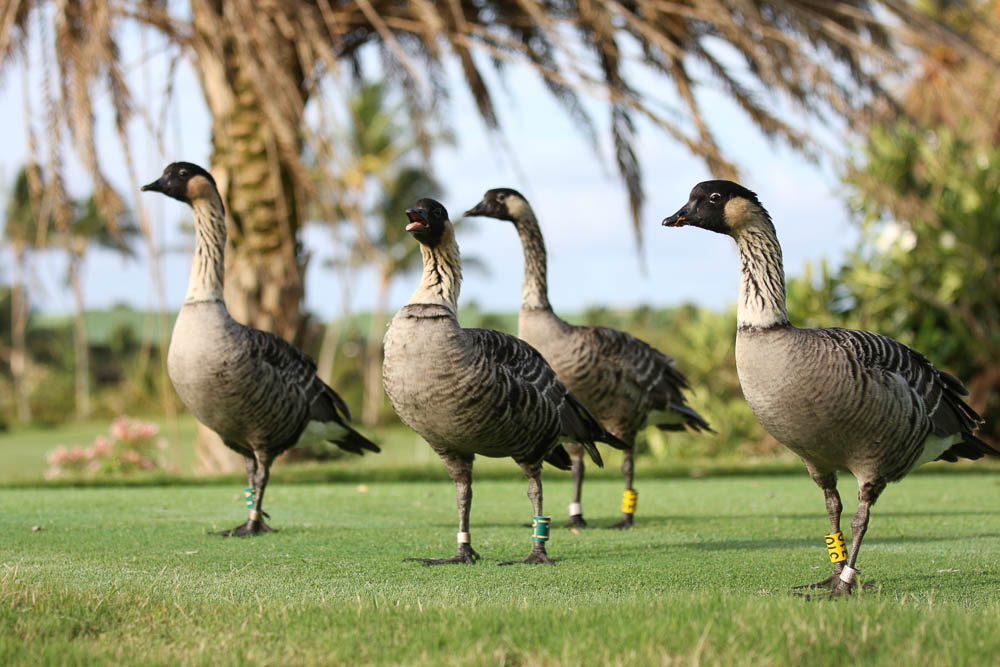
The Park is dedicated to helping conserve the 54 federally listed threatened or endangered plants and animals find that find refuge there. One of the best known is the Hawaii state bird, the nene.
The last of perhaps nine different geese species in the Islands, nene numbered about 25,000 at the time of Captain Cook’s arrival in 1778. With human contact, introduced animals competing for the food supply, disease and other factors, the populated declined rapidly. By the 1940’s only 50 nene remained.
Since 1972, Park Rangers have been actively helping improve the population with its Nene Recovery Program. Efforts include a captive breeding and reintroduction, banding, and building barriers to predators, as well as enlisting human help. As a result, more than 200 birds thrive in the park from sea level to around 8,000 feet.
The park has posted nene crossing signs that highlight key roadside areas that nene use. These include sections of Highway 11, Crater Rim Drive, and Chain of Craters Road. Motorists are urged to use extra caution in these areas, and obey posted speed limits. To report nene on the road in the park, call 808-985-6001. Outside the park, call 808-974-4221.
Hawaii Volcanoes National Park Open 24 hours per day, 365 days per year https://www.nps.gov/havo
Nene are more frequently seen in the Park during breeding season, from November to April. At other times, you can get a good look at nene at the Panaewa Rainforest Zoo & Gardens in Hilo. Their two resident nene, AJ and Kuhina. AJ was named for letters on his leg band, and Kuhina was hatched in an incubator in 1999 and imprinted on people. He’s also a popular participant in weekly Petting Zoo programs (Saturdays, 1:30-2:30 p.m.)
Panaewa Rainforest Zoon & Gardens is open daily except Christmas and New Year’s Day, 9 am.-4 p.m. Located off Highway 11 in Hilo, HI Gift Shop: 808-959-3233 www.hilozoo.org
One native bird that you’d be extremely lucky to see is the alala, Hawaiian Crow. Extinct in the wild, the alala is being nurtured in captivity for release by organizations like the Alala Project and the Keauhou Bird Conservation Center which opened in 1996. Generally closed to the public, KBCC hosts an annual Open House in December, where visitors to the remote ranch location can learn about the project through displays, then have a chance to see the birds themselves.
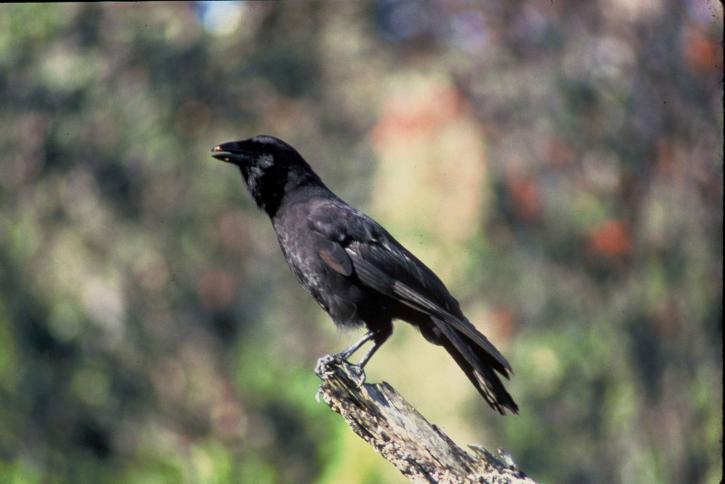
An information program on the alala reintroduction efforts will take place April 13, 2017, 6-7 p.m. at Mokupapapa Discovery Center in Hilo (see below). Another happens May 23 at 7 p.m. in the Kilauea Visitor Center Auditorium, co-sponsored by Friends of Hawaii Volcanoes National Park. ($2 donation)
For more information, visit http://alalaproject.org
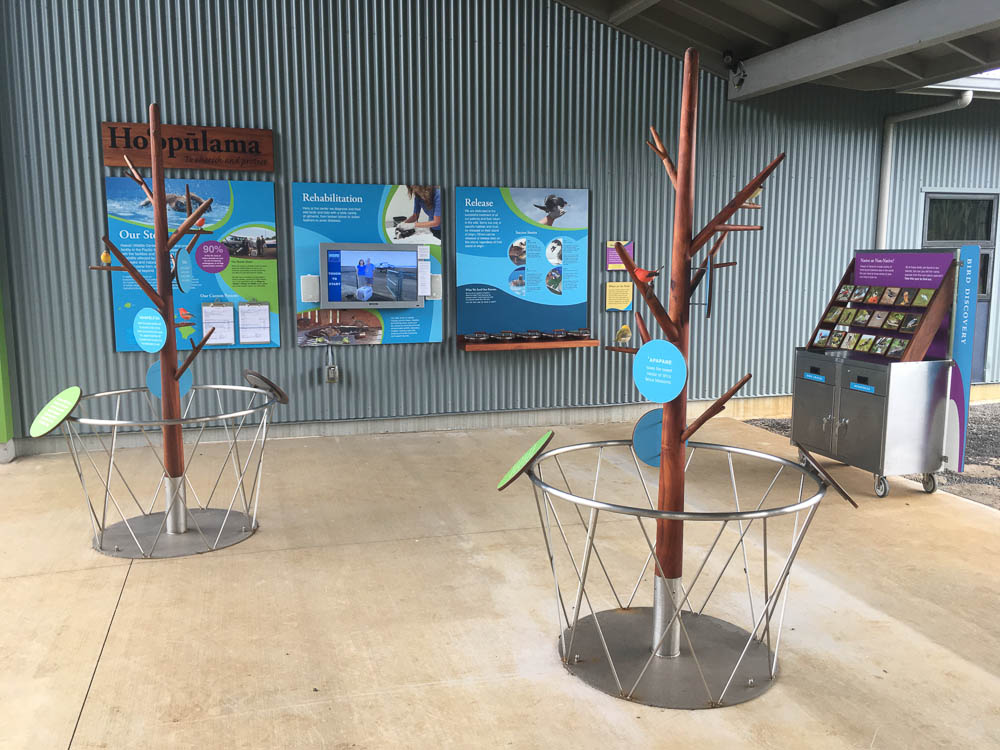
In North Kohala, the Hawaii Wildlife Center (HWC) is for the birds. A hospital, rehabilitation habitat and education center, HWC cares for sick or injured native birds from all the Hawaiian Islands, reaching to Midway and Kure Atoll. They are also the only facility in the Pacific qualified to respond to oil spills, natural disasters and major disease.
The hospital opened in 2012. Their first patient, a red-footed booby from Kauai, was successfully rehabilitated, returned to its home territory and released. Much of HWC’s patient transport is done by volunteer pilots and the civil air patrol. The goal is always to target the birds’ release. Patients are never given names. Staff and volunteers speak very softly around the birds to keep them from becoming accustomed to human voices. Aviaries are “decorated” with branches and greenery to make them less cage-like.
Although the hospital itself is closed to the public in order to protect the patients, a wealth of information is shared at HWC’s Hoopulama Science and Discovery Center, including creative displays, hands on multimedia games, videos and a step-by-step program to let visitors diagnose and prescribe treatments for patients.
“Teaching birds,” exact replicas of apapane and iiwi are featured in the Honeycreepers Exhibit. These cast resin sculptures are created from intricate wood carvings by Haruo Ochiyama of Japan. So precise are his recreations that he makes bird models for a blind school in Japan. (Teaching bird sponsorships are still available.)
There’s also a colorful gift shop dedicated to all things bird, where bird art, jewelry, books, bags, clothing and toys rule the roost.
Hoopulama Science and Discovery Center is open Tuesday-Saturday, 9 a..m-3 p.m. Admission is free. Donations welcome.
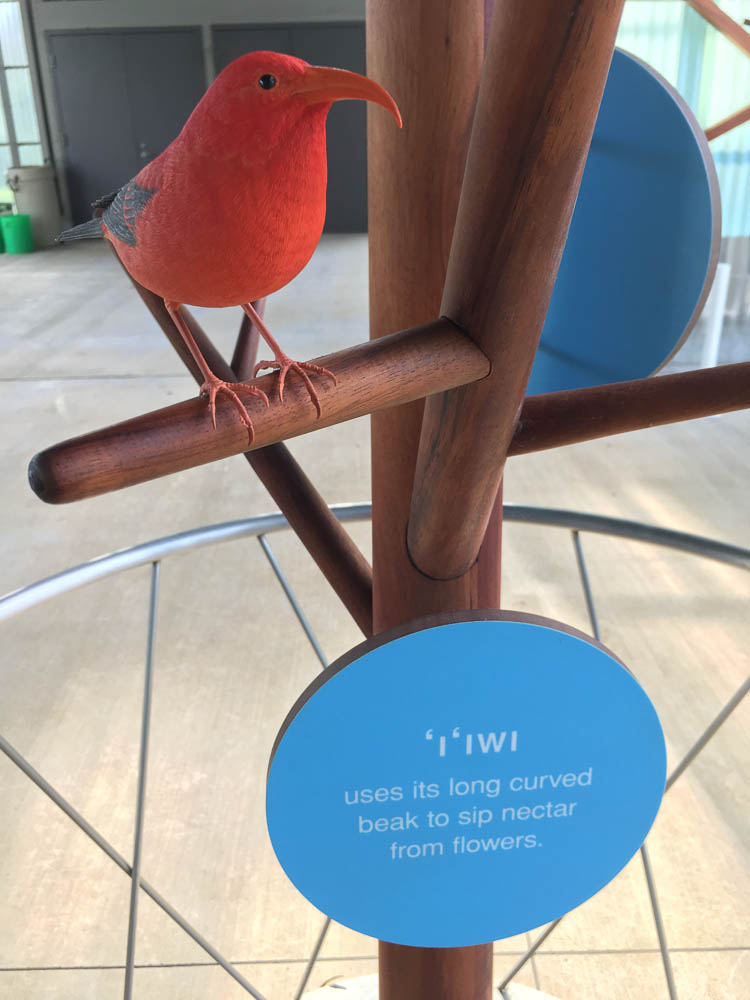

Hawaii Wildlife Center
53-324 Lighthouse Road, Kapaau, HI 96755
808-884-5000
www.hawaiiwildlifecenter.org
While HWC takes care of native birds (and the rare Hawaiian hoary bat), Ke Kai Ola is an organization dedicated to native sea mammals, including the Hawaiian Monk Seal. Known to the native Hawaiians as ilio-holo-i-ka-uaua, or "dog that runs in rough water," the Hawaiian monk seal has been in existence for more than 13 million years.

Listed as endangered since 1976, only about 1,100 of the seals exist today. Ke Kai Ola (“the healing sea”) hopes to help change that. Since the $3.2 million center opened in 2014, KKO has cared for sick, injured and orphaned baby seals, with its rehab areas for newborns, pens and pools for juveniles, a quarantine area, medical facilities and a patient food prep kitchen.
Visitors are welcome. As with HWC, patients may not be disturbed, however live video of current patients, educational displays and knowledgeable staff share information about seals and their environment in the oceanfront facility.

Ke Kai Ola
73-731 Makako Bay Drive
Kailua-Kona, HI
within the Natural Energy Laboratory of Hawaii Authority (NELHA)
808.326.7325
www.marinemammalcenter.org
To report a distressed seal, call 808-987-0765.
On the Hilo side, Mokupapapa Discovery Center is a place to learn about Hawaii’s ocean life without even getting wet. The Center is a project of the Papahanaumokuakea Marine National Monument, which was recently expanded to 582,578 square miles, making it the largest such sanctuary on the planet, with over 7,000 marine species and the largest tropical bird rookery in the world. The Discovery Center brings a slice of the Northwestern Hawaiian Islands to people who might never experience their unique environment otherwise.
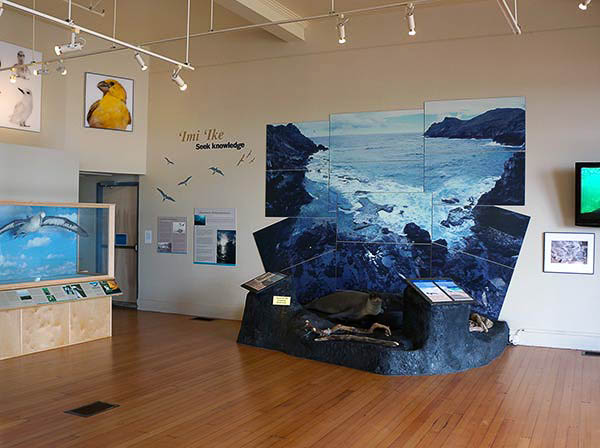
The Center contains a 3,500-gallon saltwater aquarium, life-size models of Hawaiian monk seals, and other wildlife, movie, and gallery filled with art inspired by the region. Plenty of keiki-friendly activities include hands-on replica of a Polynesian sailing canoe, interactive exhibits and more.
Mokupapapa Discovery Center is open Tuesday-Saturday, 9 a.m.-4 p.m.
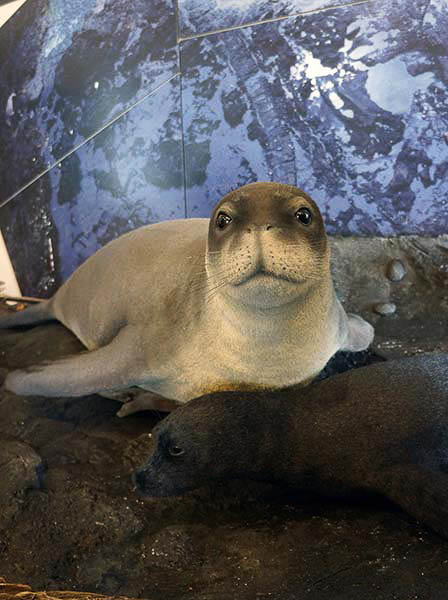
Mokupapapa Discovery Center
76 Kamehameha Avenue
(in the historic Koehnen Building)
Hilo, HI 96720
Phone: 808-933-8180
www.papahanaumokuakea.gov
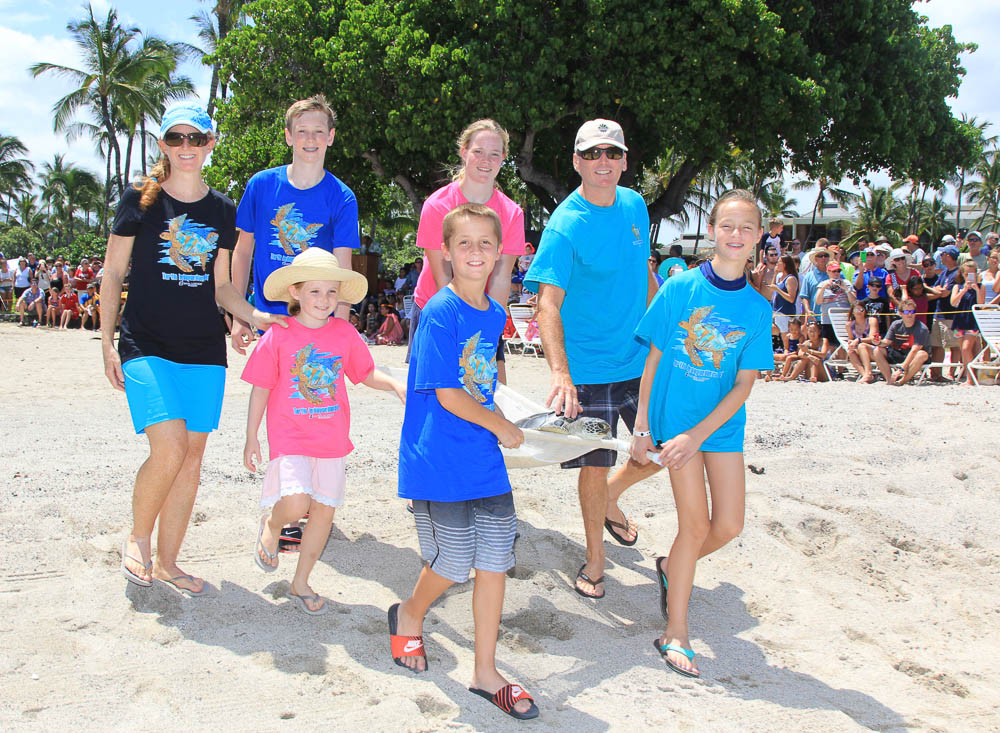
Celebrating honu, the green sea turtle, on the island of Hawaii, Mauna Lani Bay Hotel and Bungalows hosts “Turtle Independence Day” on the 4th of July each year. The event is part of their 28-year Educational Honu Program in partnership with Oahu’s Sea Life Park and their resident next of 16 breeding honu.
Each year, when the baby honu hatch, most are tagged with National Marine Fisheries Service tags and released within their first 24 hours of life. Some are sent to qualified facilities like Mauna Lani Bay, where they live in saltwater Honu Ponds under the attentive care of Loko Ia (Fishponds) Manager. In two to three years, they are given a veterinary check, and if large enough and healthy enough, released into the ocean on Turtle Independence Day.
That day, resort welcomes hundreds of families from near and far. The event begins at 10:30 a.m., when the turtles are gathered from the Honu Ponds, taken to the shoreline and released. The day includes live entertainment, an educational display about green sea turtles and barbeque.

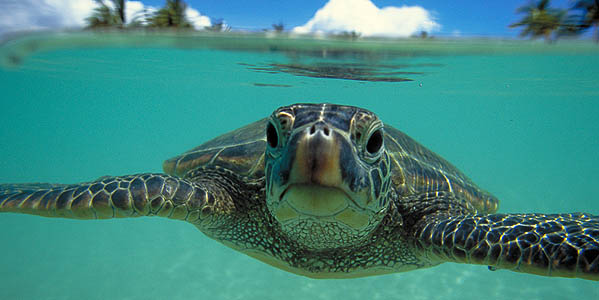
Mauna Lani Bay Hotel and Bungalows
68-1400 Mauna Lani Dr.
Kohala Coast, HI 96743
808-885-6622
For more information, visit www.maunalani.com
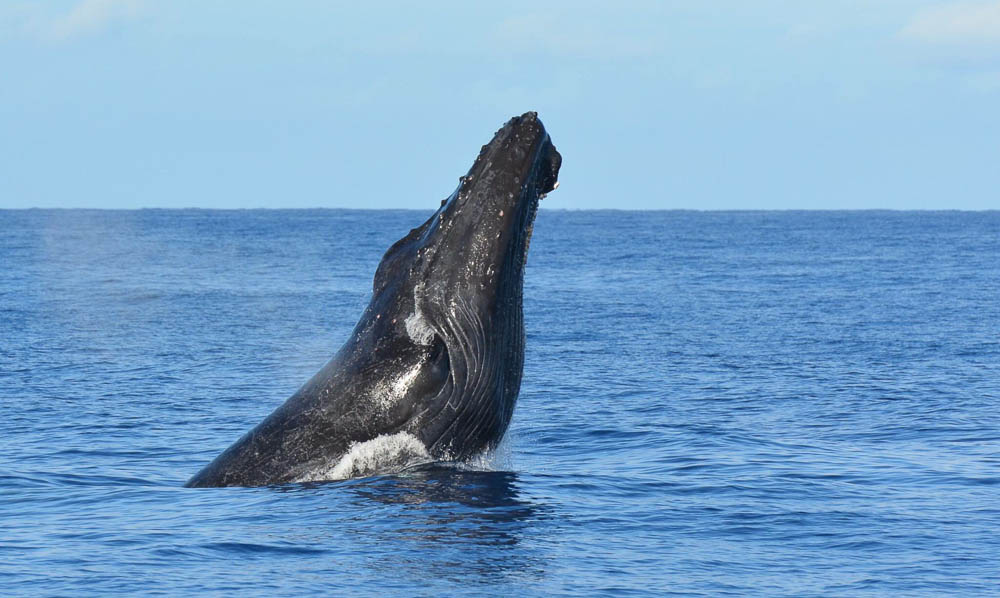
On a much larger scale, Hawaii’s biggest native species is a seasonal visitor to waters around the island. Kohola, the humpback whale, is noted in the Kumulipo, Hawaiian chant of creation, in the Second Era. “Hanau ka palaoa noho I kai” (born is the whale living in the ocean).
Magnificent animals, the whales come to the warm waters of Hawaii and Maui in the winter months to give birth, and nurture their calves. From shore, it’s possible to see whales spout and puff water vapor, slap fins and tails on the surface or perform splashing aerial breaches.
In Kawaihae, visitors can see the “Hill of the Whale,” Puukohola Heiau National Historic Site. King Kamehameha I had this temple constructed at the advice of his trusted kahuna, who prophesized that if done, the King would unite and rule all the Hawaiian Islands. Puukohola is one of the sites for the National Marine Sanctuary Foundation’s annual whale count, taking place on the last Saturday of the months of January, February and March.
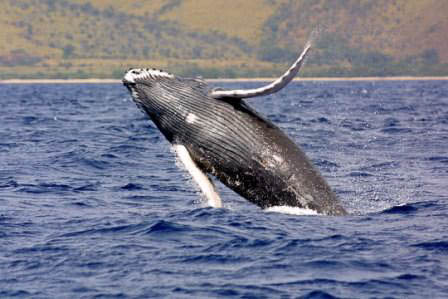
Visitors are encouraged to come and help with the whale count. NMSF also offers a free humpback whale program every Friday from 9 a.m. to 12 p.m. at Puukohola. For more information, call 882-7218.
Puukohola Heiau National Historic Site
62-3601 Kawaihae Road
Kawaihae, HI 96743
www.nps.gov/puhe
Ocean Sports is just one of the Island’s professional whale watch cruise providers, running from December 1 to April 15. Operating within safe distances, their boats take guests into the humpback territory, where mama whales play with their babies, males splash and crash to attract attention. Hydrophones lowered into the water allow passengers to even eavesdrop on whale song.
Ocean Sports also offers educational snorkel adventures, with marine life talks by seasoned crew members in addition to instruction. The presentation includes Hawaiian names for fish and possible reasons for the high rate of endemism on Hawaiian reefs, as well as care of the fragile reef ecosystem.
Hawaii Ocean Sports is open daily, 7 a.m. to 9:30 p.m. with several locations in West Hawaii, including the “Whale Center” in Kawaihae, a good starting point, with photo displays and whale watch information.
808-866-6666
www.hawaiioceansports.com
In Kona, the Kahaluu Bay Education Center provides another great way to learn about Hawaii’s native species who live in the bay: fish, shellfish, corals, sea urchins and other residents of the reef.
Established in 2011 to promote “reef etiquette, “the Center welcomes over 400,000 visitors per year. An information truck with seven-minute video teaches about the bay’s fragile ecosystem, including corals, various fishes, sea urchins and marine life. Snorkel gear rentals are also available on site, with free bay orientation.
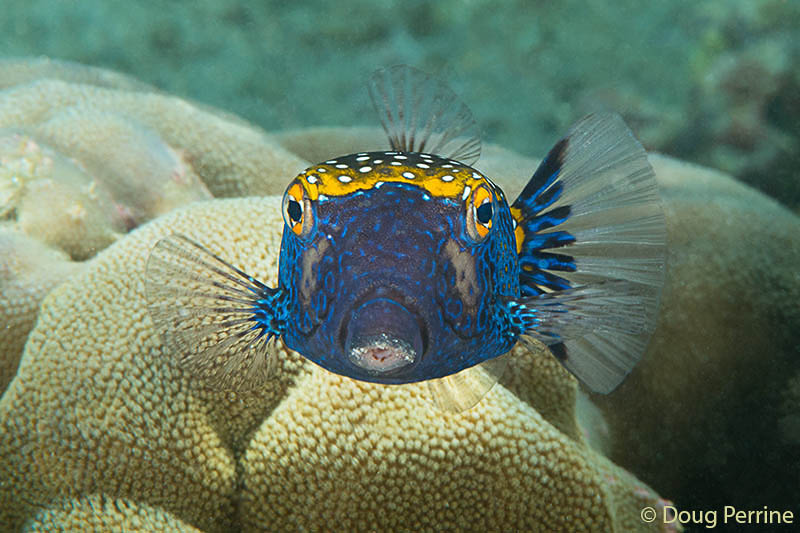
“We are educational volunteers, aloha ambassadors,” says Director Cindi Punihaole Kennedy. “It is very important for us to educate visitors how to take care of the reef. We are very blessed, very fortunate.”
Kahaluu Bay Education Center is open from 9:30 a.m. to 4 p.m. every day that the park is open (closed only in the event of hazardous conditions).
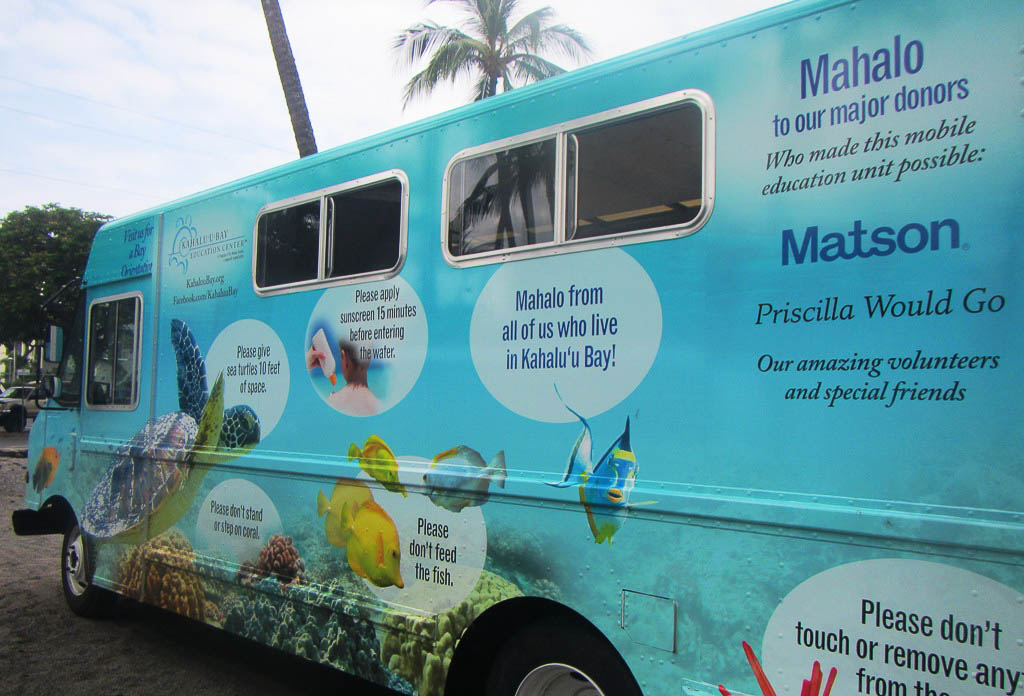
Kahaluu Bay Education Center
78-6710 Alii Drive
Kailua Kona, HI 96740
808-887-6411
http://kohalacenter.org/kbec
For more ocean adventure options visit www.gohawaii.com/hawaii-island

Provided by the Kahaluu Bay Education Center, a partnership with the Kohala Center.
The following are guidelines to help you enjoy the beauty of Hawaii’s reefs without damaging them. Mahalo for reading this information and passing on the message!